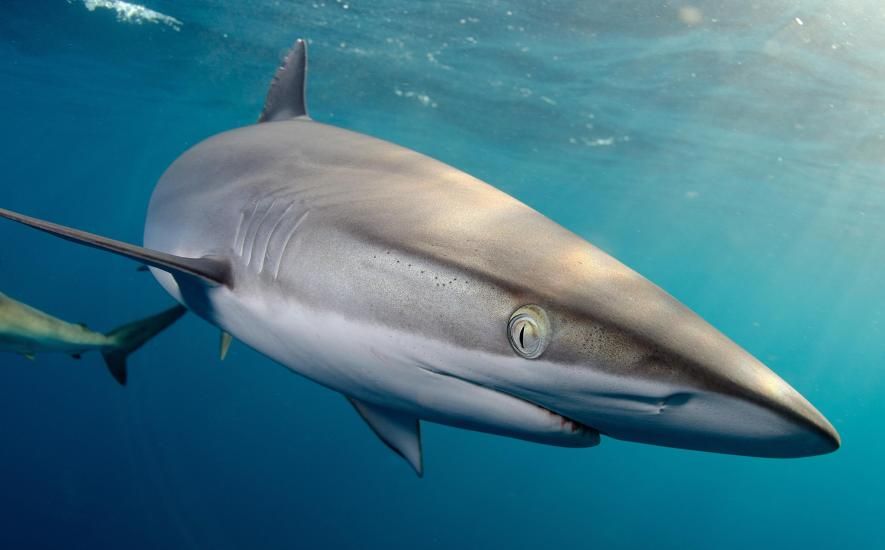If there was a shark that stands out for its dashing looks, it would probably be the Silky Shark. Named for the smooth and silky texture of its skin, the Silky Shark (Carcharhinus Falciformis) projects a sleek aura. These oceanic gray sharks have long and slim bodies with a slightly shorter dorsal fin and elongated pectoral fins. They have large eyes, flat snouts, and small serrated teeth. Fondly called Silkies, these streamlined predators can measure up to 3.5m in length and weigh as much as 340 kg. They have a lifespan of about 23 years.
Interesting facts about the Silky Sharks

These highly-migratory species are fond of subtropical waters. They like to dwell on the open sea, island shelves and slopes, and deep water reefs. Although rare, some have been spotted in inshore waters.
When it comes to their favorite food, Silky Sharks love to feed on offshore fishes but they also have a taste for squids and crustaceans. These predators also take delight in a “bait ball” of sardines along with Marlins and other sharks. The bait ball is a remarkable sight to behold. It almost looks like a constellation of stars in the deep waters because of the glistening silvery scales.
If you see the Silky Sharks slashing through a bait ball, they appear to work in a collaborative effort to ensure a successful feast. With precision, they dive open-mouthed into the massive ball of silvery fishes. The Silky Shark catches its prey with the corner of its jaw and swallows the fish whole. Silkies are quick to spot individual sardines that are trying to flee the feeding frenzy. The sardine is doomed the moment it gets separated from the group. The Silkies pick them off one by one like hors d’oeuvres. This oceanic smorgasbord is a real treat to witness first hand.
Major threats
Silkies are commonly targeted for their meat and their livers are used for oil. Their fins are also considered as a central ingredient in some delicacies such as shark fin soup. Sadly, their unique and beautiful skin has become one of their downfalls because of the demand for premium shark leather. In addition, recreational anglers consider these predators a challenging target. These streamlined creatures are also usually caught as bycatch in the tuna fishery. Due to their slow growth rate, extended gestation period, and a low number of offspring, the Silkies are susceptible to overfishing.
Shark conservation efforts
Sharks are an important part of the marine ecosystem because they keep the fish population and mid-level predators in check. Without these top predators, there will be no balance in the reef’s ecosystem.
Due to the prevailing threats, Silky Sharks have been classified as Near Threatened species under the IUCN Red List. The Caribbean nations gave additional protection to these vulnerable species by adding them to the Annexes of the Specially Protected Areas and Wildlife (SPAW) Protocol. The International Commission for the Conservation of Atlantic Tunas (ICCAT) also mandated that silky sharks caught in fishing gear by accident must be released back into the water alive.
Baja Shark Expedition understands the important role that sharks play in keeping the ocean healthy. That’s why we offer safe and sustainable shark diving Cabo. We promote shark awareness and conservation and provide snorkelers with memorable shark encounters.
